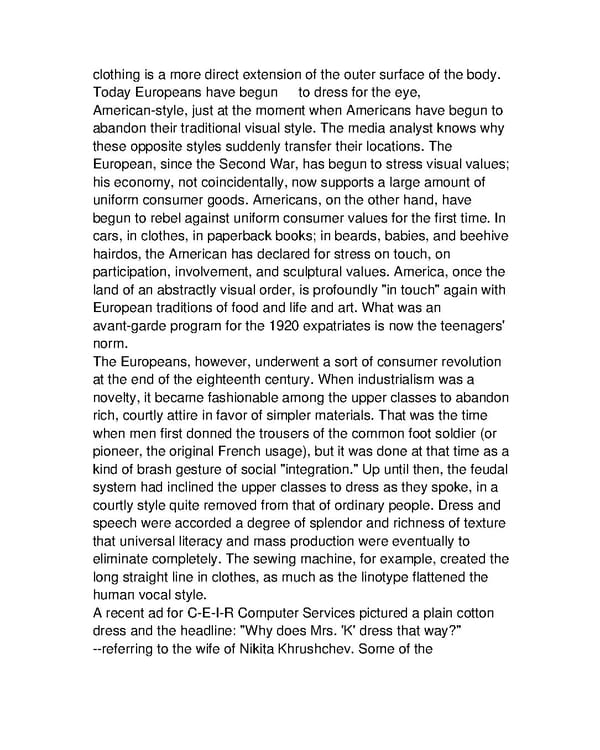clothing is a more direct extension of the outer surface of the body. Today Europeans have begun to dress for the eye, American-style, just at the moment when Americans have begun to abandon their traditional visual style. The media analyst knows why these opposite styles suddenly transfer their locations. The European, since the Second War, has begun to stress visual values; his economy, not coincidentally, now supports a large amount of uniform consumer goods. Americans, on the other hand, have begun to rebel against uniform consumer values for the first time. In cars, in clothes, in paperback books; in beards, babies, and beehive hairdos, the American has declared for stress on touch, on participation, involvement, and sculptural values. America, once the land of an abstractly visual order, is profoundly "in touch" again with European traditions of food and life and art. What was an avant-garde program for the 1920 expatriates is now the teenagers' norm. The Europeans, however, underwent a sort of consumer revolution at the end of the eighteenth century. When industrialism was a novelty, it became fashionable among the upper classes to abandon rich, courtly attire in favor of simpler materials. That was the time when men first donned the trousers of the common foot soldier (or pioneer, the original French usage), but it was done at that time as a kind of brash gesture of social "integration." Up until then, the feudal system had inclined the upper classes to dress as they spoke, in a courtly style quite removed from that of ordinary people. Dress and speech were accorded a degree of splendor and richness of texture that universal literacy and mass production were eventually to eliminate completely. The sewing machine, for example, created the long straight line in clothes, as much as the linotype flattened the human vocal style. A recent ad for C-E-I-R Computer Services pictured a plain cotton dress and the headline: "Why does Mrs. 'K' dress that way?" --referring to the wife of Nikita Khrushchev. Some of the
 Understanding Media by Marshall McLuhan Page 134 Page 136
Understanding Media by Marshall McLuhan Page 134 Page 136